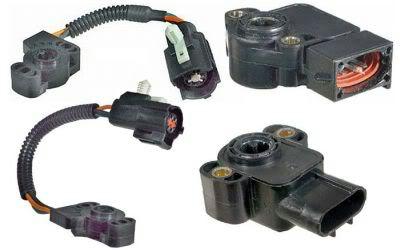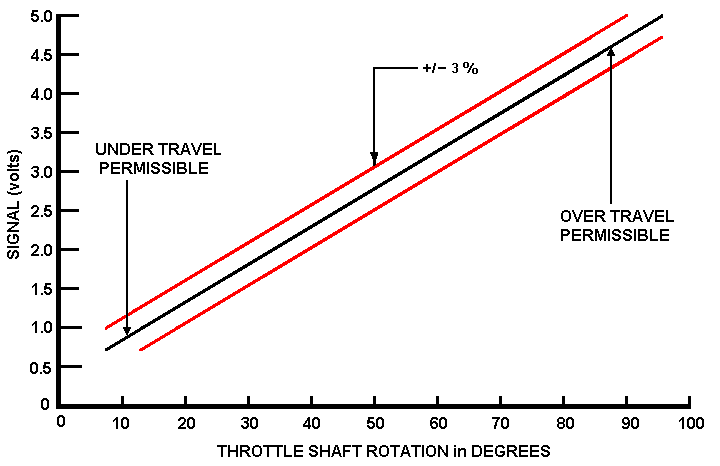|
Submitted
By: creepinjeepster

The throttle position sensor is mounted on the end of the throttle body
and tells the computer how far open or closed the throttle is. The TPS
is pretty easy to understand how it work's, it is a potentiometer
just like your dimmer switch in the dash. Voltage is fed to the TPS by
the signal return circuit. As the throttle is opened the TPS directs
more voltage to the EEC and less down the voltage reference circuit. All
of the following items will affect the TPS:
•Throttle Cable
•Throttle Body Cleanliness
•Vacuum leaks
•Air Filter
•Air Filter to Throttle Body Duct
•Engines general condition
•Harness and wire general condition
The TPS sensor has a great deal of influence on the fuel ratios and
timing curves, because the TPS is a user interface sensor. The TPS is
the closest thing you have to a phone call into EEC. EEC listens to your
every command from the TPS. There is a TPS ratchet algorithm which
continuously seeks the minimum throttle angle corresponding to a CLOSED
THROTTLE position. This alleviates the necessity to set the throttle
position sensor at an absolute position and compensates for system
changes and differences between vehicles.
•Closed Throttle can be anywhere between 0.6-1.0 volts
•Part Throttle is triggered @ 0.04 volts above Closed Throttle
•Full Throttle is triggered @ 2.71 volts above Closed Throttle

Before testing the TPS or any other EFI component perform a self-test,
trouble codes received during test can be used as a diagnostic tool
along with other indicators. To test the TPS sensor you will need a volt
meter. You need to back probe the harness while reading the voltage
between the TPS and SIG RTN pins. The exact voltage you get at any one
point is not of major concern; instead you need to watch for a smooth
increase in voltage as the throttle is moved. A TPS that does not give a
steady increase in voltage as the throttle is moved is faulty and needs
to be replaced. Also check for mechanical problems associated with the
throttle. Throttle linkage and cable can bind up, keeping the throttle
from opening correctly. Some times the idle stop screw has been
adjusted, this adjusts the base idle and moves where the TPS closed
voltage. The TPS should not need adjustment, but once the idle screw has
been tampered with, the TPS should be adjusted to match. If the idle is
low and the TPS is high lots of problems will appear. If you need to
grossly modify the TPS mounting holes to adjust Closed Throttle between
0.6-1.0 volts, you should recheck the idle stop screw first.

Throttle Position Sensor
Rotational Angle Signal Voltage
0 Under Travel 0.000
10 0.450
13 Closed Throttle 0.901
20 - 1.440
30 1.900
40 2.370
50 2.840
60 3.310
70 3.780
80 4.240
84 Full Throttle 4.538
90 Over Travel 4.538
100 5.00
Values were calculated for VREF = 5.0 volts.
These values may vary 3 percent due to sensor
and VREF variations.
Additional INFO: These are other things that can be found about Ford Fuel
Injection at fordfuelinjection.com.
|
|
| |
| © 1999 -
2009 The Ranger Station - James Oaks Enterprises LLC - All
Rights Reserved |
|
'The Ranger Station' and it's logo are Service Marks of The Ranger
Station owned by James Oaks Enterprises LLC |
| The
Ranger Station is in no way affiliated with the Ford Motor
Company. |
| Legal
Notice |
|
|